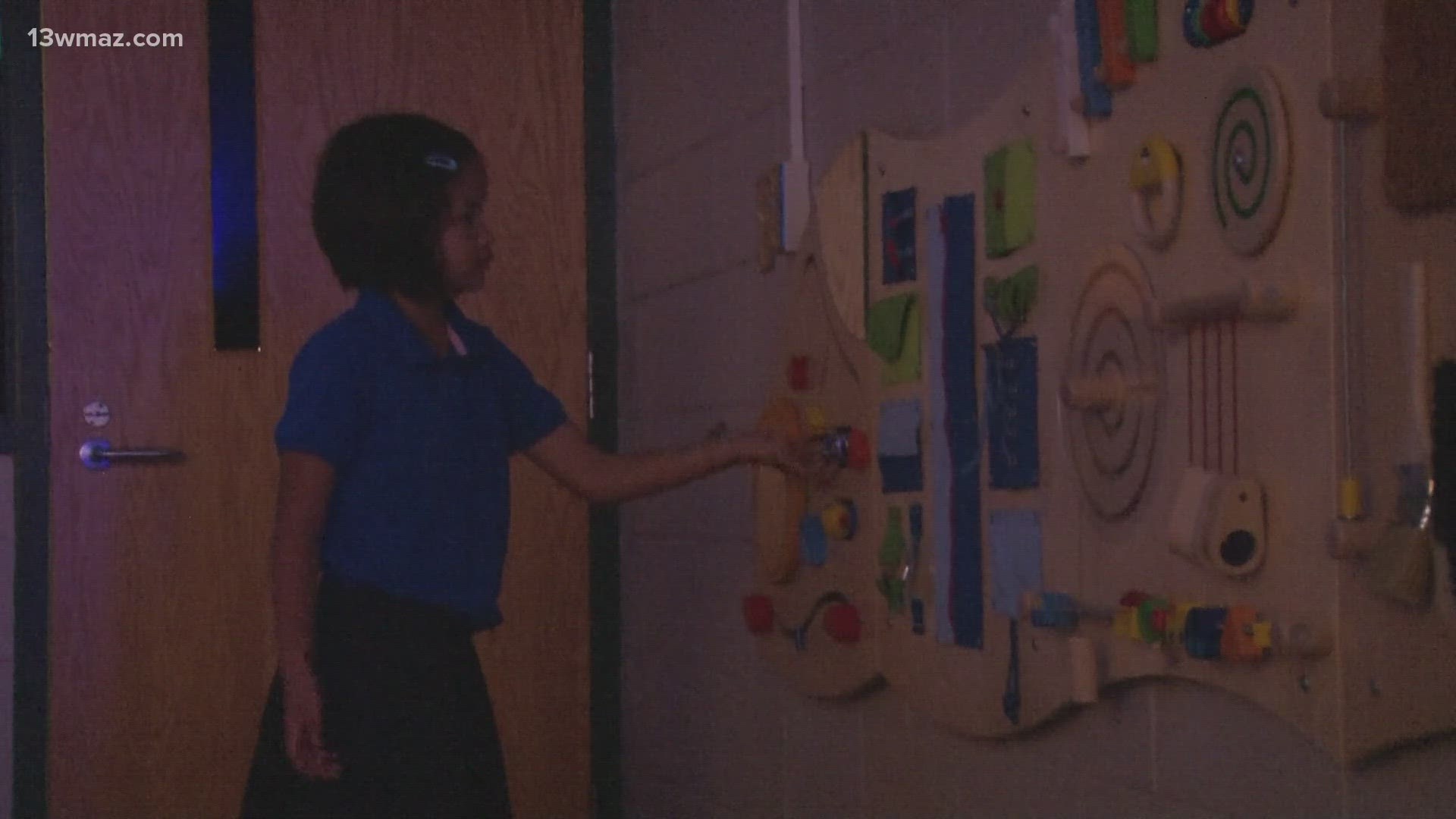BALDWIN COUNTY, Ga. — School can sometimes be a lot. There's a lot to learn and a lot of people.
The sounds and lights can overload a kid's senses. To help students, the Baldwin County School District installed sensory rooms in all five elementary schools last spring.
Pretty colors, bubbles, and toys. For students like Bryson, it's a dream come true.
“Bryson is in the 4th grade and serves in the area of autism,” Special Education teacher Jamie Steinmeyer said.
She says the sensory room is a place to relax but is also important for the education of students like Bryson.
“He can be overstimulated at times,” Steinmeyer said.
Baldwin School's Disability Service Coordinator Jamy Meeks says schools have a lot going on, and that could trigger a child with sensory processing disorders.
"Sometimes the classroom is a hard place to be,” Meeks said. “Things as simple as the lighting in the classroom, the noise level, even sitting in a hard chair."
Meeks says studies at both the University of South Carolina and Utah say 5-15% of kids have sensory processing deficits.
“I definitely think it’s gotten higher because of COVID because that was a trauma-induced situation, so we’re gonna see a little bit of a greater need," she said.
A sensory overload can affect a child’s behavior, which can affect their learning.
“A lot of times what we see is that it looks like inattentiveness in the classroom. So, that’s one of the issues. There’s also kids that are sensory seeking because they don’t have the stimuli that they need. So, then that looks like oppositional defiance or negative behaviors in the classroom,” Meek said.
So to help, the school built sensory rooms.
“A sensory room is where children can come in a safe environment and can get some visual stimuli, tactile stimuli, auditory stimuli,” Meeks said.
Rosie is non-verbal, but words aren't needed as she shrieks with joy.
“It just gives lots of opportunities to be able to self-regulate when they get overstimulated with the outside world,” Steinmeyer said.
Special education teacher Amanda Goldberg says it's made a difference with the kids, like with Rosie.
“This is my third year having Rosie and developmentally, she's kind of at the age of a toddler. When she came to me, she really did not even really follow one-step directions, and she really focused on herself and her own hands. So, in here she shows me how she can manipulate her fine motor skills. They’ve gotten honed a little more with playing with the things on that wall. When I give her these one-step directions, she’s following, and that she's happy in here," Goldberg said.
Meeks says the room is mainly used by kids in special education, but any child can use the room.
Superintendent Noris Price says they used $100,000 from the CARES emergency COVID-19 relief fund to install those five sensory rooms.

